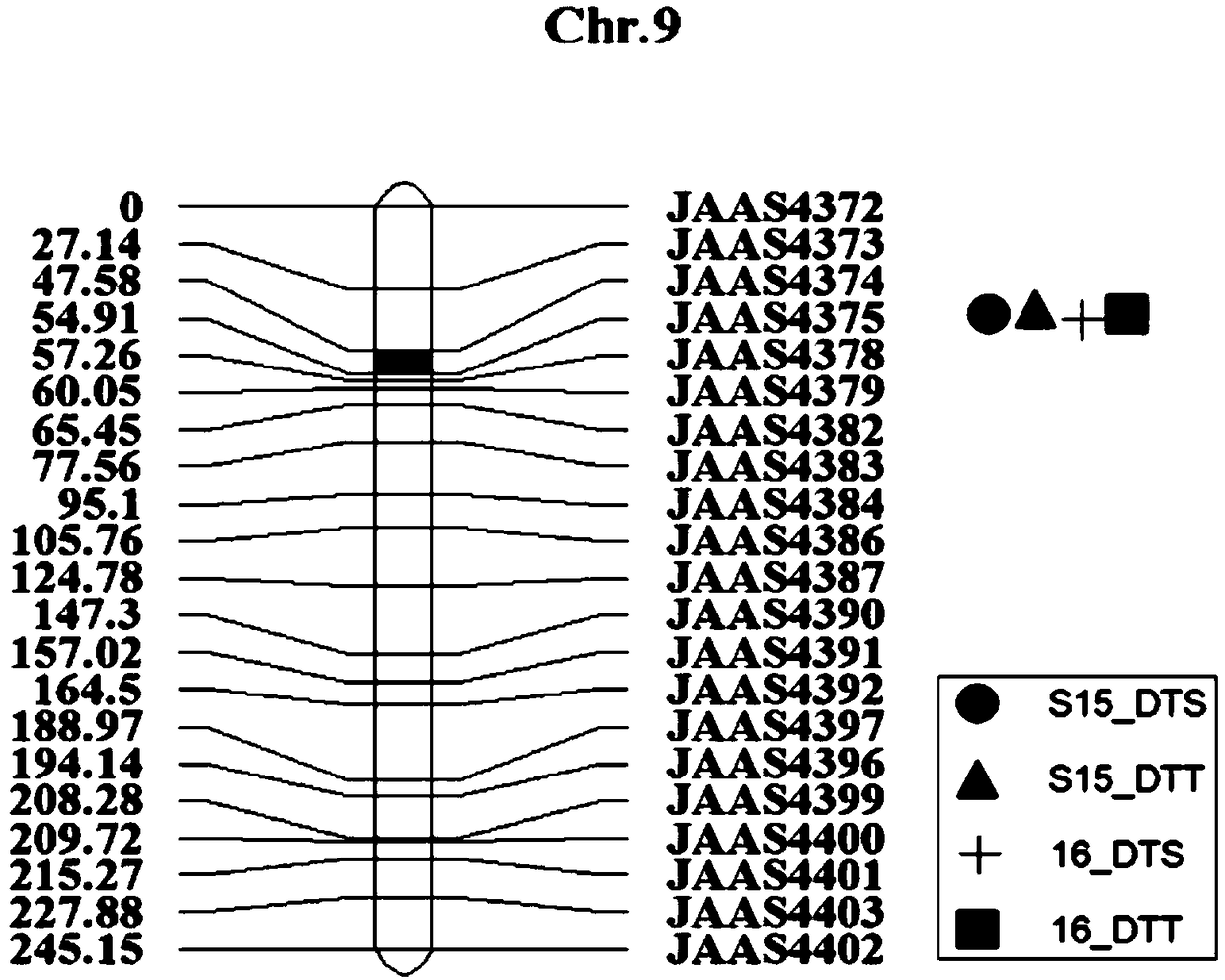Molecular marker of QTL (quantitative trait loci) loci in flowering period of maize chromosome 9 and application of molecular marker of QTL loci in flowering period of maize chromosome 9
A molecular marker, flowering stage technology, used in the determination/inspection of microorganisms, DNA/RNA fragments, recombinant DNA technology, etc., can solve the problems of many repetitive sequences, difficult cloning, and large numbers, and achieve high selection efficiency and identification. Simple method, select target effect
- Summary
- Abstract
- Description
- Claims
- Application Information
AI Technical Summary
Problems solved by technology
Method used
Image
Examples
Embodiment Construction
[0025] Unless otherwise specified, the following examples are all in accordance with conventional experimental conditions, such as Sambrook et al. Molecular cloning experiment manual (Sambrook J & Russell DW, Molecular cloning: a laboratory manual, 2001), or according to the conditions suggested by the manufacturer's instructions and software instructions.
[0026] 1. BC1RIL genetic segregation and mapping population construction
[0027] On the basis of the previous germplasm resource screening research, it is clear that Zao 49 has early maturity and excellent comprehensive traits, and can be used as a parent for excavating and utilizing excellent traits such as flowering. After crossing Zao 49 and Su 95-1, backcross Su 95-1 once. Afterwards, 7 consecutive generations of self-addition were carried out in Nanjing, Jiangsu and Sanya, Hainan by single-grain transmission method, and the BC1RIL genetic segregation and mapping population was successfully constructed, which included...
PUM
 Login to View More
Login to View More Abstract
Description
Claims
Application Information
 Login to View More
Login to View More - R&D
- Intellectual Property
- Life Sciences
- Materials
- Tech Scout
- Unparalleled Data Quality
- Higher Quality Content
- 60% Fewer Hallucinations
Browse by: Latest US Patents, China's latest patents, Technical Efficacy Thesaurus, Application Domain, Technology Topic, Popular Technical Reports.
© 2025 PatSnap. All rights reserved.Legal|Privacy policy|Modern Slavery Act Transparency Statement|Sitemap|About US| Contact US: help@patsnap.com


